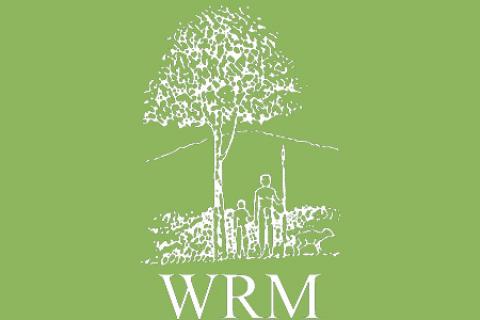Representatives of the Murut, the Kadazandusun, and the Rungus, and some 30 more tribes coming from the remote region of Tongod, traversed in July of this year northern Borneo to reach the gleaming office of Sabah’s Deputy Chief Minister of Land, Datuk Lajim Haji Ukin at the capital city of Kota Kinabalu.
The group was there to demand the government to abide by its own laws, recognize native rights to protect and manage their natural resources, and halt reallocation of lands to logging and plantation corporations.
Bulletin articles
Ms. Mai of the Palaung ethnic community and mother of three children in Pang Daeng village of north Thailand has been camped in front of Chiang Mai City Hall for the past few weeks. Along with about hundred members of her community, she came to petition the Chiang Mai governor for the release of her husband Mr. Tan Bortuk and others.
The Yaboti forest, 300 km to the east of Posadas in the Province of Misiones, was designated as a Biosphere Reserve by UNESCO in 1995. In addition to its importance for biodiversity, it is the only refuge and means of subsistence of two communities of the Mbya Guarani ethnic group (Tekoa Yma and Tekoa Kapi’I Yvate), peoples who only recently got in touch with the outside world and who are now threatened by the interests of the Mocona Forestal S.A. company.
At the beginning of the year 2003, a ton of copper cost 1,800 dollars. At the beginning of this year the price rose to approximately US$ 3,600, double its value twelve months before. The deficit in supply was over 500 thousand tons. The scenario, completely different from that predominating over the past few years, could not have been more auspicious for the launching of operations in the largest copper mine ever to exist in Brazil.
There seems to be no truce for the U’wa people in their long resistance in defence of their ancestral rights to life and to their land and in rejection of the oil exploitation projects on their traditional territory (see WRM Bulletins 10, 22, 29 and 38). The Colombia Plan, Ecopetrol and its associated oil companies, the neglectful government, are all threats to the U’wa territory, who believe that it is “the heart of the world. The veins feeding the universe run through this territory. If it is destroyed, the world will bleed to death.”
The integrity of the Yasuni National Park (PNY), located in the heart of the Ecuadorian Amazon is in serious danger from the imminent launching of oil activities by the Brazilian State oil company Petrobras (Petrobras Energia Ecuador).
In the city of Cajamarca in northern Peru, thousands of peasants, students and social organizations are struggling against the plans of the Yanococha mining company (its main shareholder is Newmont, a US mining company, together with the Peruvian Buenaventura company and the World Bank’s International Finance Corporation) to carry out exploration in Cerro Quilish, whose streams feed the Grande and Porcon rivers.
In Popondetta, Oro Province, Papua New Guinea, representatives of all land owning communities from around the province gathered on 12th March 2004, in the first Oro landowners Forum on Land Rights and Community Based Natural Resource Management.
They committed to ensuring sustainable resource management and to protect their rights as the rightful owners of those resources, declaring that:
For centuries, forest and forest-dependent peoples were able to carry out agricultural and cattle-raising activities in a way that was compatible with forest ecosystem conservation. What was later described in pejorative terms by Western experts as "slash-and-burn" agriculture was in fact a system that had proven to have minor and reversible impacts on the forest while providing livelihoods to the communities involved. A system that in today's language would be termed "sustainable".
Tropical forests have been inhabited for thousands of years by communities that made use of them for subsistence in many ways, including agricultural activities. It was a type of agricultural production that took into account crop interactions and was carried out in such a way that not only did it prevent destruction of the forest but was able to be in harmony with it. The communities promoted areas where a diversity of species useful for human consumption were concentrated, within a diverse scenario, but which did not undermine the forest’s biological bases.
In 1944, the Rockefeller Foundation funded the introduction of a series of technologies in Mexican agricultural production. This gave rise to an agricultural production model known as the “Green Revolution” with a central concept of “high yielding varieties” developed in the framework of monoculture crops supported by a technological package including mechanization, irrigation, chemical fertilization and the use of toxic chemicals to control pests.
From the 15th century onwards, technological progress enabled Europe to take an enormous lead in charting the whole world through the invasion of the American continent, the almost total annihilation of the native population, and the unrestricted take-over of political and economic power.
